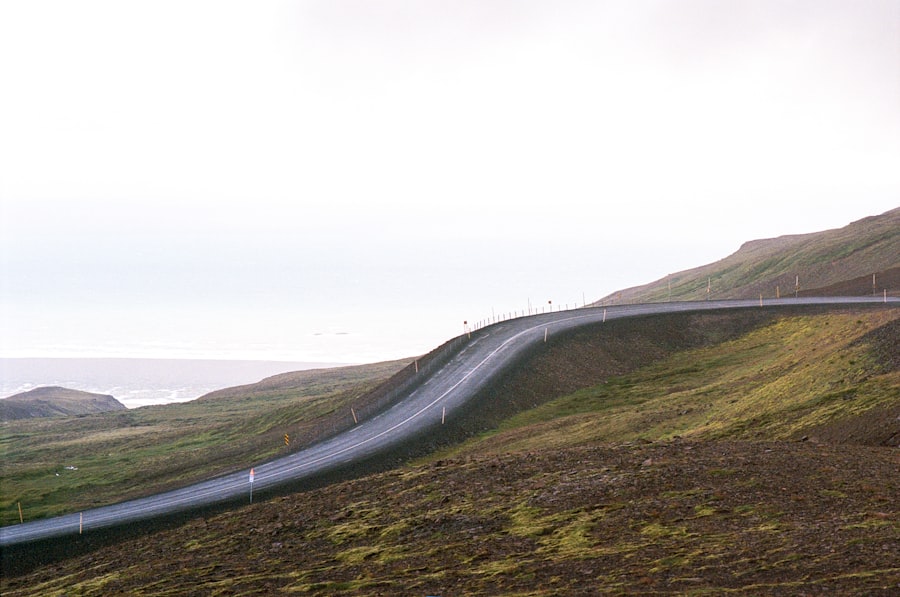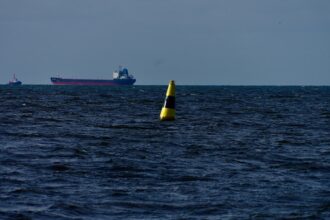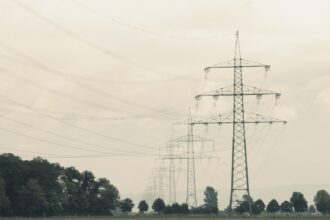Pipeline ruptures represent a significant concern in the realm of infrastructure management, particularly in industries such as oil and gas, water supply, and chemical transport. These incidents can lead to catastrophic environmental damage, economic losses, and even loss of life. The integrity of pipelines is crucial for the safe and efficient transportation of various substances, and when a rupture occurs, it can have far-reaching implications.
Understanding the dynamics of pipeline ruptures is essential for stakeholders, including engineers, environmentalists, and policymakers, to develop effective strategies for prevention and response. The complexity of pipeline systems, combined with the diverse materials they transport, makes them susceptible to various forms of failure. As the global demand for energy and resources continues to rise, the pressure on existing pipeline infrastructure increases, heightening the risk of ruptures.
This article aims to explore the multifaceted nature of pipeline ruptures, examining their causes, types, vulnerabilities, and the measures that can be taken to mitigate their occurrence.
Key Takeaways
- Pipeline rupture can have serious consequences, including environmental damage and loss of life.
- Causes of pipeline rupture can include corrosion, external damage, and material failure.
- Different types of pipelines, such as natural gas and oil pipelines, have varying levels of vulnerability to rupture.
- Factors affecting pipeline rupture include pressure, temperature, and the surrounding environment.
- Detection and monitoring of pipeline rupture are crucial for preventing and mitigating the consequences of a rupture.
Causes of Pipeline Rupture
The causes of pipeline ruptures are varied and can be attributed to both natural and human-induced factors. One of the primary natural causes is geological activity, including earthquakes and landslides, which can exert immense pressure on pipelines buried underground. Additionally, extreme weather conditions such as heavy rainfall or flooding can lead to soil erosion or ground movement, compromising the structural integrity of pipelines.
These natural events are often unpredictable, making it challenging for operators to prepare adequately. Human factors also play a significant role in pipeline ruptures. Corrosion is one of the most common causes of failure in older pipelines, where the protective coatings may degrade over time due to environmental exposure.
Furthermore, construction activities near pipeline routes can inadvertently damage them, leading to leaks or ruptures. Poor maintenance practices and inadequate monitoring systems can exacerbate these issues, allowing small problems to escalate into major failures. Understanding these causes is crucial for developing effective prevention strategies.
Types of Pipelines and their Vulnerability to Rupture

Pipelines can be categorized into several types based on their function and the materials they transport. The most common types include oil and gas pipelines, water supply pipelines, and chemical transport pipelines. Each type has its unique vulnerabilities that can lead to ruptures.
For instance, oil and gas pipelines are often subjected to high pressures and temperatures, making them more susceptible to stress fractures. In contrast, water supply pipelines may be more vulnerable to corrosion due to prolonged exposure to moisture. The materials used in pipeline construction also influence their vulnerability.
Steel pipelines, while strong and durable, are prone to corrosion if not properly maintained. Plastic pipelines offer resistance to corrosion but may be susceptible to cracking under extreme temperatures or pressure changes. Understanding the specific vulnerabilities associated with each type of pipeline is essential for implementing targeted monitoring and maintenance strategies.
Factors Affecting Pipeline Rupture
| Factors | Description |
|---|---|
| Pipeline Age | The older the pipeline, the higher the risk of rupture due to corrosion and wear. |
| Material Quality | The quality of the pipeline material can affect its susceptibility to rupture. |
| External Damage | Damage from excavation, construction, or natural disasters can lead to pipeline rupture. |
| Pressure Fluctuations | Extreme pressure changes can weaken the pipeline and lead to rupture. |
| Corrosion | Corrosive substances can degrade the pipeline material and increase the risk of rupture. |
Several factors contribute to the likelihood of a pipeline rupture occurring. One significant factor is the age of the pipeline; older systems are often more prone to failure due to wear and tear over time. Additionally, the environmental conditions surrounding a pipeline can greatly influence its integrity.
For example, pipelines located in areas with unstable soil or frequent seismic activity face higher risks than those situated in more stable environments.
Inadequate monitoring systems can lead to undetected leaks or weaknesses that may eventually result in a rupture.
Furthermore, the pressure at which a pipeline operates can significantly affect its susceptibility to failure; excessive pressure can lead to stress fractures or ruptures. By understanding these factors, operators can implement more effective risk management strategies.
Detection and Monitoring of Pipeline Rupture
Detecting pipeline ruptures promptly is vital for minimizing their impact on the environment and public safety. Various technologies are employed for monitoring pipeline integrity, including pressure sensors, flow meters, and acoustic monitoring systems. These tools allow operators to identify anomalies in real-time, enabling swift responses to potential ruptures before they escalate into major incidents.
In addition to traditional monitoring methods, advancements in technology have introduced innovative solutions such as drones and satellite imagery for pipeline inspection. These technologies provide a comprehensive view of pipeline conditions and can detect issues that may not be visible from the ground. By integrating these advanced monitoring systems into their operations, pipeline operators can enhance their ability to detect potential failures early on.
Consequences of Pipeline Rupture

The consequences of a pipeline rupture can be devastating and multifaceted. Environmentally, ruptures can lead to significant contamination of soil and water sources, harming ecosystems and wildlife. For instance, oil spills from ruptured pipelines can devastate marine life and disrupt local fishing industries.
The long-term effects on biodiversity can be profound, often requiring years or even decades for ecosystems to recover fully. Economically, the repercussions of a pipeline rupture can be severe for both companies and communities. Cleanup efforts can be costly and time-consuming, often resulting in substantial financial losses for operators.
Additionally, communities affected by spills may face disruptions in their water supply or local economies, leading to further economic strain. The reputational damage incurred by companies involved in such incidents can also have lasting effects on their operations and stakeholder relationships.
Mitigation and Prevention of Pipeline Rupture
To mitigate the risk of pipeline ruptures, operators must adopt a proactive approach that encompasses regular maintenance, monitoring, and risk assessment strategies. Implementing comprehensive inspection programs allows for early detection of potential issues such as corrosion or structural weaknesses. Additionally, investing in advanced materials and technologies can enhance pipeline resilience against external threats.
Education and training for personnel involved in pipeline operations are also critical components of prevention strategies. Ensuring that staff are well-versed in best practices for maintenance and emergency response can significantly reduce the likelihood of human error contributing to a rupture. By fostering a culture of safety and vigilance within organizations, operators can better protect their infrastructure from potential failures.
Technical Details of Pipeline Rupture
Understanding the technical aspects of pipeline ruptures is essential for developing effective prevention strategies. When a rupture occurs, it typically involves a sudden release of pressure within the pipeline system. This release can result from various factors such as material fatigue or external impacts.
The mechanics behind a rupture often involve complex interactions between stress concentrations and material properties. Engineers utilize various models and simulations to predict potential failure points within pipelines. These models take into account factors such as material properties, operating conditions, and environmental influences.
By analyzing these variables, engineers can identify areas at higher risk for failure and implement targeted interventions to enhance overall pipeline integrity.
Material and Design Considerations for Pipeline Integrity
The choice of materials used in pipeline construction plays a crucial role in determining their overall integrity and resistance to rupture. Steel remains one of the most widely used materials due to its strength; however, it requires protective coatings to prevent corrosion over time. Advances in composite materials have also emerged as viable alternatives that offer enhanced resistance to environmental factors while maintaining structural integrity.
Design considerations are equally important in ensuring pipeline safety.
Incorporating safety features such as pressure relief valves or redundant systems can provide additional layers of protection against potential ruptures.
Repair and Rehabilitation of Ruptured Pipelines
When a pipeline rupture occurs, prompt repair is essential to minimize environmental damage and restore service continuity. The repair process typically involves assessing the extent of the damage before implementing appropriate remediation measures. Depending on the severity of the rupture, repairs may range from patching small leaks to replacing entire sections of damaged pipe.
Rehabilitation techniques have evolved significantly over recent years, with methods such as trenchless technology gaining popularity due to their efficiency and reduced environmental impact. These techniques allow for repairs without extensive excavation, minimizing disruption to surrounding areas while ensuring that pipelines are restored to optimal operating conditions.
Future Trends in Pipeline Rupture Prevention and Management
As technology continues to advance, future trends in pipeline rupture prevention are likely to focus on enhanced monitoring systems powered by artificial intelligence (AI) and machine learning algorithms. These technologies will enable operators to analyze vast amounts of data in real-time, identifying patterns that may indicate potential failures before they occur. Additionally, there is a growing emphasis on sustainability within the industry.
Future pipeline designs may incorporate eco-friendly materials and practices that not only enhance safety but also minimize environmental impact during construction and operation. By embracing innovation and prioritizing sustainability, stakeholders can work towards creating a safer future for pipeline infrastructure while protecting vital ecosystems from potential harm. In conclusion, understanding the complexities surrounding pipeline ruptures is essential for ensuring public safety and environmental protection.
By examining their causes, vulnerabilities, detection methods, consequences, mitigation strategies, technical details, material considerations, repair techniques, and future trends, stakeholders can develop comprehensive approaches that enhance pipeline integrity while minimizing risks associated with ruptures.
In the wake of the recent pipeline rupture, understanding the technical details behind such incidents has become crucial for industry professionals and environmentalists alike. A related article that delves into the intricacies of pipeline infrastructure and the potential causes of ruptures can be found on the In The War Room website. This article provides valuable insights into the engineering challenges and safety protocols associated with pipeline maintenance. For a comprehensive analysis, you can read more about it by visiting this article.
WATCH THIS! The FSB’s Hidden War on Europe’s Pipelines
FAQs
What are the common causes of pipeline rupture?
Pipeline ruptures can be caused by a variety of factors, including corrosion, external damage from excavation or construction activities, material defects, and operational errors.
What are the technical details of a pipeline rupture?
A pipeline rupture involves the sudden release of the pipeline’s contents due to a breach in the pipeline wall. This can result in the release of hazardous materials, environmental damage, and potential safety hazards for nearby communities.
How are pipeline ruptures detected and monitored?
Pipeline operators use a variety of technologies to detect and monitor pipeline ruptures, including remote sensing, leak detection systems, and regular inspections using tools such as smart pigs and drones.
What are the potential environmental and safety impacts of a pipeline rupture?
A pipeline rupture can result in the release of hazardous materials into the environment, leading to soil and water contamination, as well as potential health and safety risks for nearby communities.
How can pipeline ruptures be prevented?
Pipeline operators can prevent ruptures by implementing regular maintenance and inspection programs, using corrosion-resistant materials, conducting thorough risk assessments, and implementing safety measures such as leak detection systems and emergency response plans.




